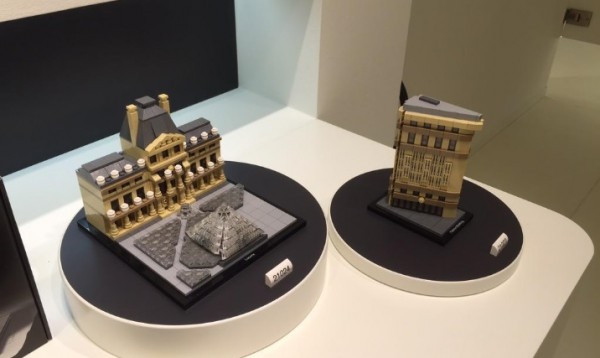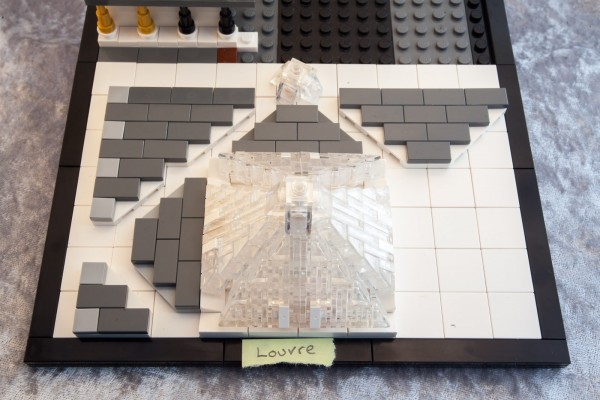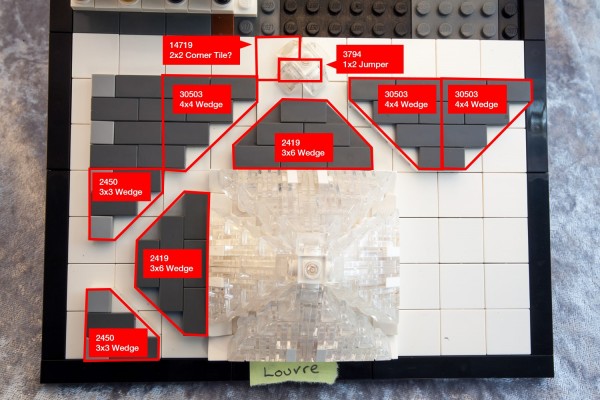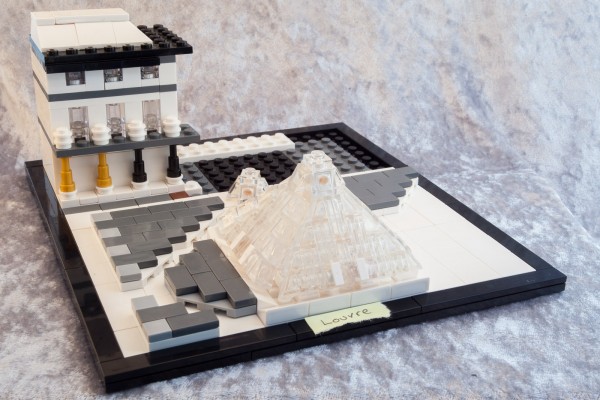Reverse Engineering LEGO Architecture 21024 – The Louvre (Part 2 – The Courtyard)
This is part 2 in reverse-engineering the upcoming LEGO Architecture Louvre set #21024. (Go back and see how to build I.M Pei’s glass pyramid in Part 1.)

The plaza is easier to see in this photo from toysnbricks.com
Today I wanted to build the courtyard of the Louvre set. Thankfully, I have found a few additional photos which show the building in alternate angles. I actually started off by building most of the left flank of the building, because I wanted to determine how deep the model will be. (We’ll look at it and the central part of the building in the next article.)
I was able to build the courtyard working from the back-left corner towards the front. The new photo made it easier to guess the sizes of the various wedge plates, which helped me arrange the grid of 2×2 tiles. (I used white tiles because I build almost everything in White.)
The main shapes have been highlighted as I predict the part selection. We have three 4×4 wedge plates, and at least two 3×3 wedge plates, since it is hard to tell if the 3×6 wedge is made up of two 3×3 parts or not. We can also see that position of the smaller pyramid in the back is only possible if we use a 1×2 jumper, which would be most attractively surrounded by a 2×2 corner tile, but we’ll see what they actually use.
I’m excited by a few of the parts in the set, namely Tile 1×1 (3070) and Tile 1×2 (3069) in Trans-clear. I had to substitute dark gray tiles, since I don’t actually own any 1×2 tiles in trans-clear, since it is currently a 0.20$ part in the US. There should be at least 38 of them! 1×1 clear tiles are even rarer at 0.30$ in any reasonable quantity, and I expect we will get 6 of them.




 TOM ALPHIN builds
TOM ALPHIN builds